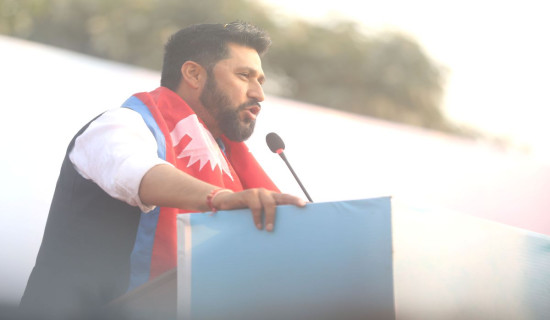- Tuesday, 20 January 2026
Lessons Of Gorkha Earthquake
April 25, 2015, was the day Nepal was hit by one of its worst earthquakes ever. The Gorkha earthquake with 7.8 magnitude caused massive destruction and violently shook the nation. It claimed nearly 9,000 lives and injured over 22,000 others. Hundreds of thousands of homes were destroyed, leaving millions of people homeless. This disaster highlighted the need for better preparedness and coordination in disaster management.
The earthquake hit the central part of Nepal, with its epicentre in Gorkha district, 181 km northwest of Kathmandu. The tremors were felt in India, Bangladesh, and China. The destruction was huge, 14 districts including Kathmandu Valley were severely affected. Thousands of buildings, including schools, hospitals, and cultural heritage sites, collapsed. The earthquake was followed by several aftershocks, making the situation worse leaving millions in dire need of assistance. On May 12, another aftershock of 7.3 magnitude hit, adding to the casualties.
In prompt response, government and international organisations started search and rescue operations. Nepal’s security forces worked day and night to save lives, but they faced many challenges, lack of equipment, damaged roads, and poor communication. Foreign assistance poured in from all over the world; over 130 foreign medical teams arrived to support the relief work.
Nepal’s health sector responded quickly too. Within hours of the disaster the Ministry of Health activated its Health Emergency Operations Centre. Hub hospitals in Kathmandu and other regions were set up to receive the injured. International medical teams along with local health workers provided critical care to the injured, including surgeries and trauma services. Triage points were set up at airports to receive those who were being airlifted from remote areas.
Despite the chaos the health sector performed well. No major outbreaks of disease were reported due to good surveillance and early action. Vaccination campaigns against measles and cholera were launched in the affected areas. However, services were disrupted in some rural areas, especially for maternal and neonatal care.
The earthquake taught us many lessons on disaster preparedness. One of the biggest challenges was the lack of coordination between government and international organisations. Help arrived fast but aid distribution was slow, and many remote areas were left without necessities for days. Poor road infrastructure and landslides made it difficult to reach these areas.
Another big issue was the lack of earthquake-resistant buildings. Most of the buildings that collapsed were old and not built according to the standards. Many modern buildings also failed due to poor construction. Experts say we need to strictly enforce the building codes to prevent such destruction in future.
The earthquake also uncovered weaknesses in Nepal’s catastrophe management systems. While the on-the-spot response was commendable, the long-term recovery has been gradual. Many people affected by the earthquake are still in need of permanent housing. The National Reconstruction Authority was set up to oversee the rebuilding process, but progress has been hindered due to many factors, including political instability.
As Nepal looks to the future, it is abundantly clear that better preparedness is crucial to minimise the impact of such events in the future. Nepal is notably vulnerable to earthquakes due to its place along the tectonic boundary among the Indian and Eurasian plates. Experts warn that major earthquakes may strike at any time.
To minimise the impacts in the event of such a catastrophic event, we must implement building codes to construct earthquake-resistant buildings. Public awareness campaigns about catastrophe preparedness are also crucial, as is the need for making plans and coordination between diverse stakeholders, such as government companies, international companies, and nearby groups.
Despite the massive suffering, the resilience of Nepali people has been awesome. Communities have come together to rebuild, and the government has made significant recovery efforts and implemented disaster management plans. It is imperative to learn the lessons from the earthquake to stay safe and prepared in the future.
















